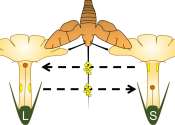Q&A: Where the wild bees are—and aren't—impacts food supply
Honey bees—plump, fuzzy, and famed for their honey-making—capture the popular imagination. Yet, wild bees are equally vital for pollination and, by some measures, outshine honey bees as pollinators. This is why UBC researcher ...









